This best pico de gallo recipe is easy to make and packed with flavor. Fresh tomato and onion, herbs and spices come together for a bright salsa. Perfect for taco night or your next gathering!
What is Pico de Gallo
Pico de Gallo is a fresh salsa or relish made from tomato, onion, serraño or jalapeño pepper, garlic, cilantro and lime juice.
It is most commonly served with Mexican or Spanish food.
It can be eaten on it's own as a salsa with chips, or used as a topping for many different dishes such as tacos, burritos, salads, and more.
It's easy to make and uses fresh, whole foods.
It adds a pop of flavor and color to the table and is perfect in summertime when tomatoes are in season and perfectly ripe!
Where did Pico de Gallo get its name
There are may different explanations on why Pico de Gallo has it's name. Here's all the different theories that are floating around out there:
- The literal translation of "Pico de Gallo” means in English “Beak of the Rooster." This has been interpreted in two different ways. First, it has been said a rooster "bites or pecks." Because the spicy pepper in the pico de gallo "bites or pecks" it has been tied to the spanish verb Picar - hence the "pico."
- The word "piquant" is defined has having a sharp taste or appetizing flavor. Some believe that the Pico in Pico de Gallo translates to the word piquant.
- The American food writer Sharon Tyler Herbst states the name derives from the gesture to pick the single pieces between the thumb and the forefinger: similar to a rooster beak. It seems that in origin it was typical to eat the Salsa without any silverware.
- Otherwise, in the book “Authentic Mexican: Regional Cooking from the Heart of Mexico”, Rick Bayless supports the Idea Pico de Gallo is named in this way because of the size of the diced ingredients, close in shape to the bird-feed.
- Another theory popular in Mexico tells that the vegetable pieces have to be as little as cut by a rooster’ beak, and spicy as like a peck on the tongue!
- Finally, another tale maintains the Idea the name deduce the name from the shape of the Serrano peppers, similar to a rooster beak.
How to make the best Pico de Gallo
First, dice all your ingredients up. This is the most time consuming part!
Tomatoes
I like to use Roma Tomatoes when making Pico de Gallo - they are a bit firmer in texture and hold up to the liquid better over time.
For Romas, I quarter, then follow the four steps below: cut out the pulpy middle, strip any extra mush and seeds, slice in to strips, then dice into small squares.
Focus on trying to keep your diced pieces all about the same size for the best Pico eating experience!
Onion
I've tried many different ways, and I've discovered this is the best way to cut an onion.
You'll cut the onion in half, place it face down, then make long cuts in towards the middle of the root ball without cutting all the way through.
Then, rotate the onion 90°, cut the other direction to get the dice, then cut off the root ball.
You'll be left with uniform sized pieces to add to your pico. If you need a more detailed tutorial, you can check out my post on How to Cut an Onion.
Garlic
How to peel garlic the easy way: take your clove of garlic and place it on your cutting board.
Turn your knife sideways, place it on top of the clove, and press down with the heel of your hand like this:

The exterior of the clove will split and you'll be able to peel it off in one piece.
Discard the tough exterior, then dice the clove itself into tiny, similarly sized pieces.
Cilantro
There are a couple of different schools of thought on cilantro - some people love it, while others think it tastes like soap.
I am not in the soap group, and therefore, I say the more cilantro the better.
I love a rough chop, and I don't worry about picking the leaves off the stems. I'll pull out any truly thick or woodier stems, but I leave the smaller, more delicate ones that are attached to the leaves on.
They'll get more tender as they sit in the pico and you won't even notice them.

Serrano Pepper
Serrano pepper is traditionally hotter than it's cousin, the jalapeño.
Jalapeños are often used in pico, and can be substituted in this recipe as well, but don't expect it to stay the BEST pico de gallo recipe!
A small, single, serrano pepper is used here, and you cna control the heat level. Leaving the seeds in will make the pepper (and thus the pico) much much hotter.
I prefer to slice it in half, remove the seeds, and give it a rinse under cold water to remove any remaining seeds.
From there, I cut it in long strips, then turn them sideways and dice into tiny, uniform pieces.

Lime Zest + Lime Juice
Don't skip the zest! Zest adds so much flavor and brightness to a dish, and this is no exception.
You'll need a microplane zester like this one to first zest the outside of the lime.
Once you've zested the whole exterior, cut it in half and squeeze all the juice you can out of the lime and into the bowl.
The key to the best pico de gallo recipe is in letting it rest. Combine all of the ingredients, cover and refrigerate for a day.
The tomatoes will juice up and the flavors will meld so every bite is flavor-packed.

Non-reactive bowls: the what and why
You want to make pico de gallo in a non-reactive bowl. Non-reactive means the material the pot, pan, bowl or utensil is made of (or coated with) will not react with acids.
Non-reactive materials
The most common non-reactive materials in your kitchen are:
- stainless steel
- ceramic
- glass
- enamel
- wood
- plastic
You can read more about non-reactive materials in this post.
Pico de Gallo variations
A classic Pico de Gallo recipe requires just five ingredients: ripe tomatoes, onion, Mexican green peppers, fresh cilantro, and lime juice.
But, this timeless recipe can vary depending on the seasons, the regions, and the family history.
This salsa is popular in all of Mexico, particularly in the regions of Sonora, Yucatan, Guanajuato, and Oaxaca, with some variations.
For instance, in Yucatan, it is called X'nipek (dog nose) and flavored with the extra spicy Habanero pepper. Zow!
Another interesting variation is a sweet Pico de Gallo, made with seasonal fruit, lime, salt, and chili powder.
Try mango, pineapple, or peach. Yum.
What to serve Pico de Gallo with
Now that you've made the best pico de gallo recipe, what will you serve it with?
It will stand up on it's own, with some tortilla chips as a snack or to bring to a gathering. You can always serve it as a trio with my guacamole and Cranberry Orange Salsa.
Or, add it to any Mexican style dish - I love to add it to my Southwest Taco Salad or my Copycat Chipotle Burrito Bowls.
Recipe

The Best Pico de Gallo Recipe
This best pico de gallo recipe is easy to make and packed with flavor. Fresh tomato and onion, herbs and spices come together for a bright salsa. Perfect for taco night or your next gathering!
Ingredients
- 1 ¼ cup diced roma tomatoes (about 3 medium)
- ½ cup diced white onion (about ½ medium)
- 4 cloves garlic
- 1 medium serraño pepper
- ½ cup cilantro, chopped
- 1 lime
- 1 teaspoon salt
Instructions
- Dice tomatoes and onions and combine in a bowl.
- Smash garlic to peel, then dice and add to tomato mixture.
- Slice the pepper lengthwise, pulling out seeds and ribs and giving a rinse under cold water. Then slice into thin strips, turn 90°, and dice into tiny pieces. Add to the bowl. Do NOT touch your face or lick your fingers, and go wash your hands with soap before continuing. (Trust me on this one, I've already made the mistakes for you!)
- Rough chop the cilantro and add to the bowl.
- Zest the lime into the bowl, then cut in half and squeeze as much juice as you can out of it into the bowl.
- Give everything a good stir to combine, cover, and refrigerate.
Notes
Pico de gallo is better on the 2nd day! For maximum flavor, make it a day ahead, then let it sit in the fridge. The flavors will blend to perfection.
Pico can tend to have a high water content - you may want to use a slotted spoon to serve to drain off any excess liquid.
Wash your hands after you chop the pepper - trust me!
Recommended Products
As an Amazon Associate and member of other affiliate programs, I earn from qualifying purchases, at no additional cost to you. Thank you for your support!
Nutrition Information:
Yield: 6 Serving Size: 1Amount Per Serving: Calories: 11Total Fat: 0gSaturated Fat: 0gTrans Fat: 0gUnsaturated Fat: 0gCholesterol: 0mgSodium: 98mgCarbohydrates: 3gFiber: 0gSugar: 1gProtein: 0g
I may earn a small commission off purchases made through affiliate links in this post from Amazon and other sellers. This helps me continue to run the blog and keep providing you fresh content. Thank you for your support!


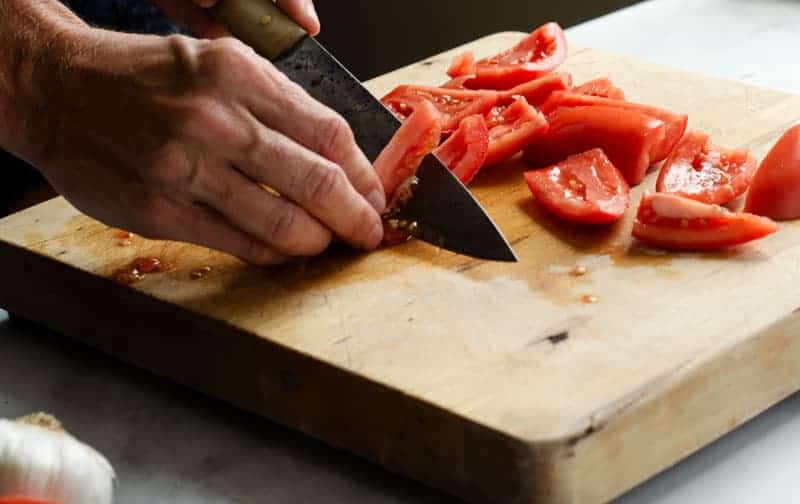


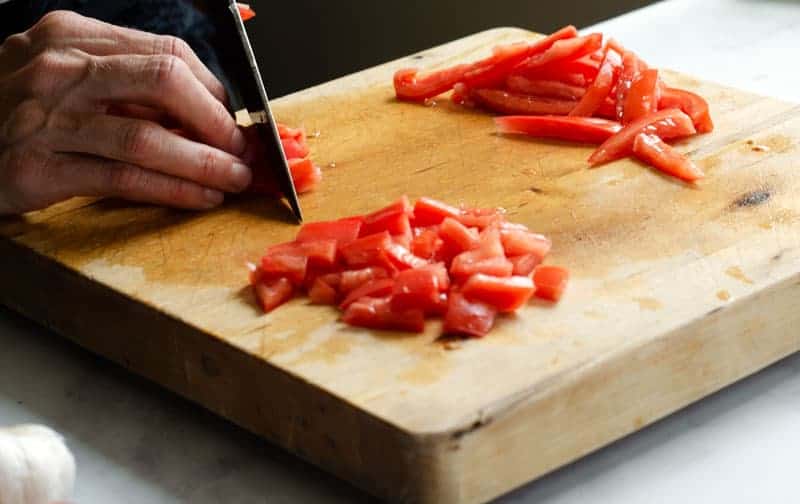

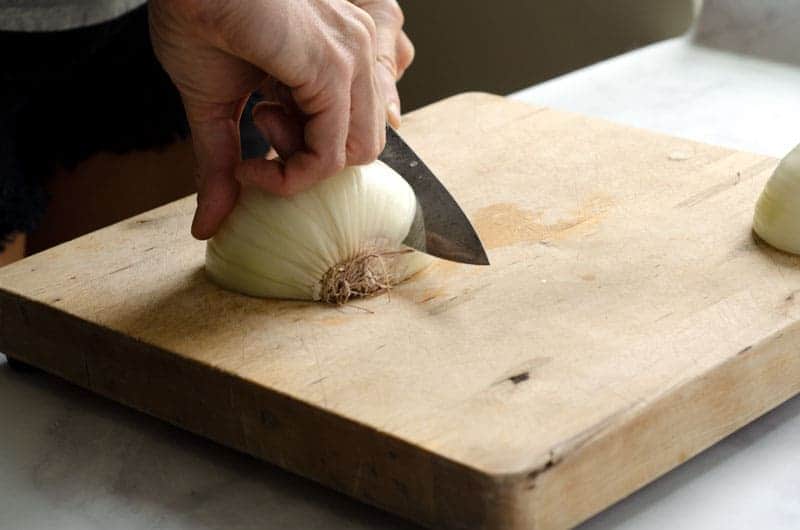






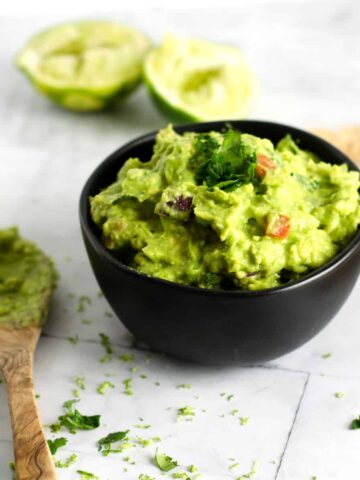
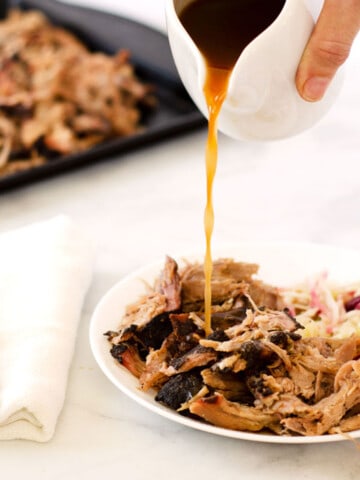

Leave a Reply